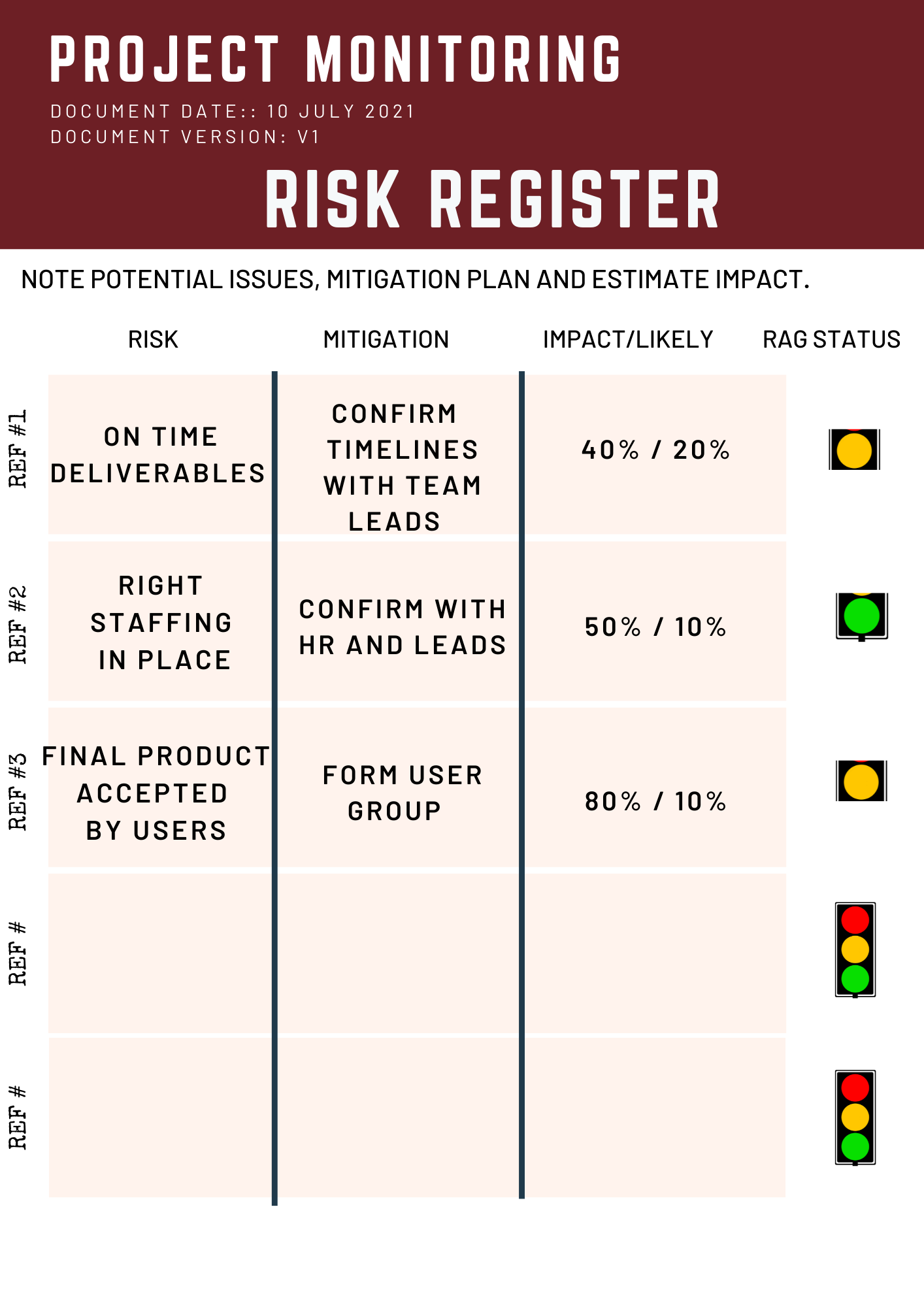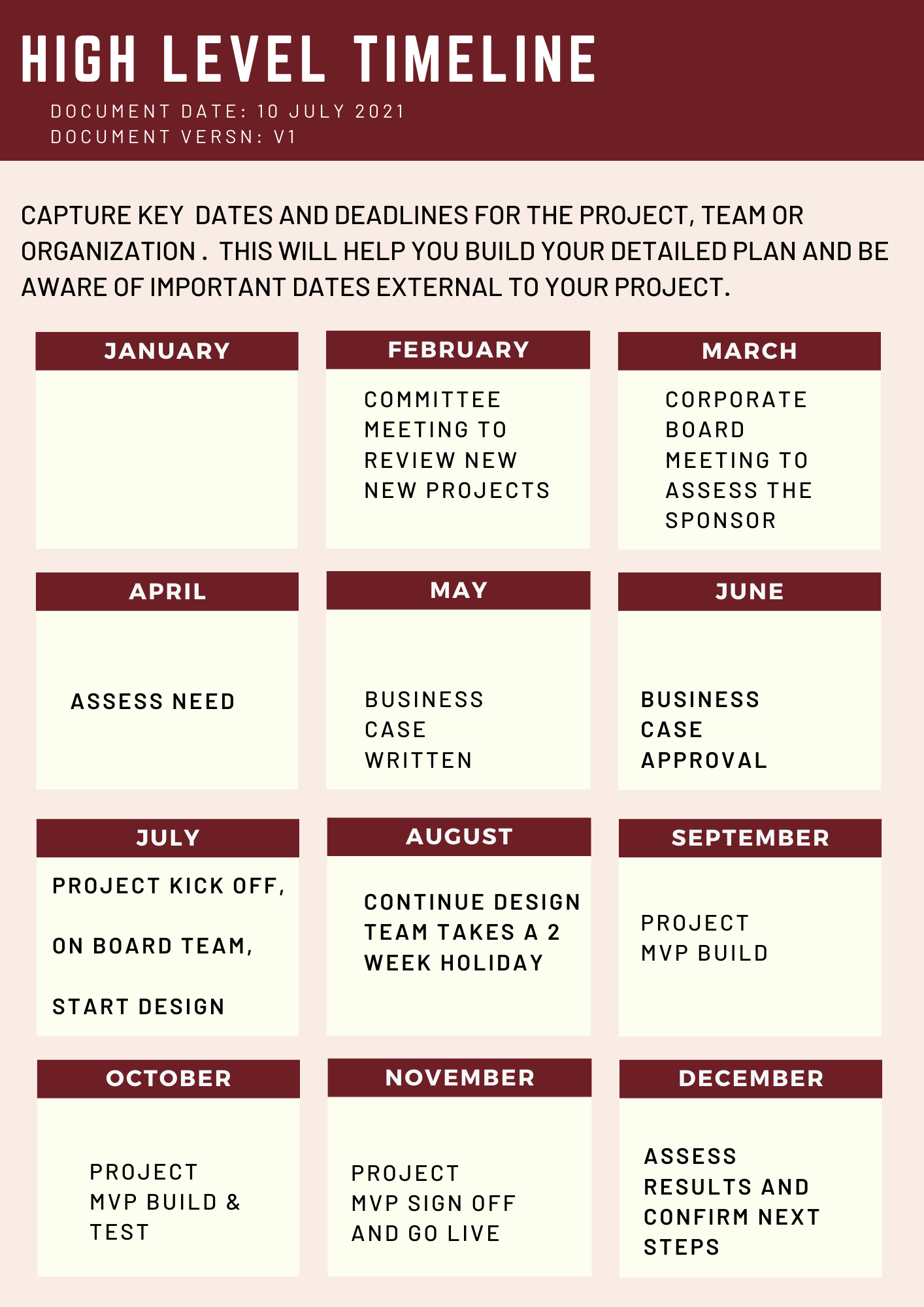The Project Managers Toolkit
9 Essential tools for Success
Business Case
Project Charter
Project Plan
Dashboard
Budget & Staff Plan
Communication Planner
Monitoring Logs
Decision Assessment
High level Timeline
The Project Manager’s Toolkit contains:
A Power Point file ready for your information based on the formats below
An Excel file for easy Project Planning, Budgets, KPI’s with built in calculations
And the PM ToolKit Reference Guide with completed document examples
Want to be an effective and efficient project manager?
A Project Toolkit is an essential tool to:
organize all the critical information in one place in a single point of truth.
be accessible to the entire team in digital form and with version control
provide current and up-to-date project information for team and stakeholder meetings
What is a Toolkit?
A snapshot of your Project in one place available from any Digital source. Ready to update as changes occur. This capability is the secret to the success of good Project Management.
A Toolkit enables you to keep an eye out for issues without having to remember them. Maximize your efficient and effectiveness by logging the issues, actions and mitigations as they come up.
A digital version of the Toolkit can also help you share this content with others immediately. But more on that later. New managers or managers working with small projects, often choose to use with excel or editable PDF’s since they are easy to use and share.
These points seem simple, but they are not always carried out. The importance of having a Project Toolkit is that it needs to be used every day. The style may vary, but the actions and outcomes do not.
I have seen experienced managers fail from lack of oversight. New managers succeed because they understood the balance between project management document “hygiene” and this idea of a single source of truth. A Toolkit allow you to keep track of a project's various moving parts.
So, what is in a Project Manager’s Toolkit? The Secret to a Project Manger’s Success!
What should be included in a project managers Toolkit?
Below is my list of "must-haves" for project oversight start-to-finish. Of course, how much of the Toolkit you use is up to you. Here are my suggestions for the top 11 documents:
1. Business Case
Before there is a Project, often a Business Case is created to clearly state the goal, requirements, timing, and release the funding.
This is the first document every project manager should review with the Project Sponsor. While not needed for smaller internal projects, it is recommended.
If KPI’s are documented, use these as the benchmark for your Stakeholder updates during the Project.
3. Project Plan
A list of the work planned by Milestones. Timing, staff allocation and status are key. The formats may vary from spreadsheet or online Kanban style, or handwritten flip chart. It depends on the project goal and team style.
Regular status updates will be needed to show progress. Delays may require changes to downstream work. A simple color coded status provides easy oversight.
Get the Toolkit with Excel sheet to build your own plan.
4. DashBoard
A weekly summary of project status often uses a RAG (red, amber, green) status and arrows for quick updates and trends. Used for team or sponsor meetings to summarize issues and handle escalations.
Use the Toolkit’s Excel sheet to create your own Dashboard with auto calculating graphics.
5. Budget & Staff Planner
The estimated and actual cost tracker for all project expenses. Note that we document staff, non staff and operational costs. You may also track asset expense or depreciation. Staff expenses is based on hours and rate for each of the staff roles. The staff plan is the detail behind this summary data. See my blog on Budgeting for more details.
Staff Planning is key to both the project plan and budget. The data needs to be cross referenced to ensure numbers add up for work allocation and costs. Document what skills are needed. Hours by person or role type. Validate staff mix and total hours for reasonableness.
Use the Toolkit’s Excel auto calculating spreadsheet and graphics ready for your data.
6. Communication Planner
All projects need communication within the team and to its 'customers.' This log is a simple tracker for the types of communications needed, timing, and audience. Communication is an underrated activity that is important to virtually every project. No matter if you are painting the family room or building an app—don’t forget to provide and respond to communication.
7. Project Monitoring Logs
The Quality Log tracks the build quality issues and provide visibility to recurring issues. Actions to correct and the status are key to addressing the problems quickly.
The Risk Register is a forward looking document to ensure risks are considered, assessed, and a mitigation plan is put in place for the more likely scenarios.
The Change Log tracks all of the requested changes, which changes have been assess for approval and which are approved and ready to move to the design and build work.
Changes to the build may impact scope, project planning and staffing and budgets. Be aware: approved additional work will require updates to the other parts of the Project Manager’s Toolkit.
8. Decision Assessment
When a major decision requires additional analysis and consideration, document the key points of the decision and options considered. This will make the decision more transparent and well documented.
When looking back for lessons learned or addressing Steering Committee concerns. This document will help to provide clear information about the basis for the decision.
See more about how this tool can help here.
9. High Level Timeline
An overview of key dates within and outside the Project can help a manager with detailed planing. To be aware of:
Key dates for Stakeholders
Important Organization Events
Impacts to Staffing such as Holidays and Vacations.
What Project Management Workbook is best?
There are a lot of great online tools and apps available today. I will break down a few and the pros and cons:
Trello — A tool I use a lot. Easy “kanban” style to-do list. Make the planning of tasks and work allocation easy. Everyone can access it. Available in online and app format for free use. Suitable for scrum processes. But does not include all of the project set up (Charter, Staffing, Budget) needed for full-on Project Management. I have a short tutorial on this in my Project Managers Workbook video.
Clickup — One of the better full projects management online tools. It is integrated with Google products and can handle almost any type of project needed. It can be pricey for small projects. Some projects may worry about data privacy since data is stored in a public cloud.
MS Project — The old standby for waterfall work breakdown Gantt charts. It can do almost everything in terms of tracking. All the critical project members need a copy of the software to use it, and it requires a learning curve. Plus regular document updates and maintenance and sanity check to make sure it makes sense.
Word and Excel documents — Simple to use, free to access. An word and excel file can be accessible to everyone. Creates an end-to-end overview quickly (especially with my Toolkit which has word and excel documents ready to use and set up with calculations and graphics). These files are easy to share and update. Used together with online tools, they can provide some of the tools not generally available with the low cost or free version.
Get started today with the free reference Guide and Toolkit!
What did you think of the Workbook scope? Do you agree? What process do you use?
Did you try to use the Workbook or make your own? I would love your feedback.
Please answer in the comments below.












